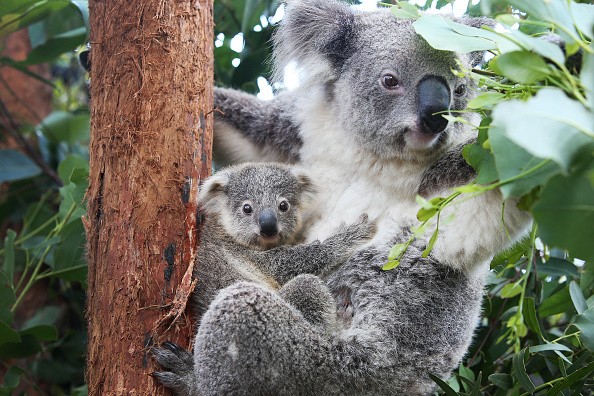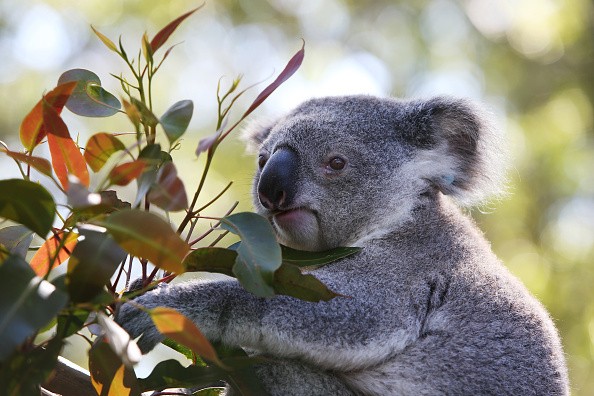The proposed Queensland coalmine will require clearing more than 1,000ha of koala habitat. Protesters expressed concern over a "disturbing pattern" of planned mines that are barely below the need for an environmental impact study.

Excavating the Area
To excavate coal under a new mine being considered in central Queensland, more than 1,000 hectares of koala habitat and 70 hectares of greater glider habitat would need to be removed.
Although both marsupials have recently been declared endangered due to habitat degradation, the state government is still considering the planned mine without requiring an environmental impact assessment (EIS).
According to environmental activists, the Vulcan South proposal by Vitrinite is the latest in a "disturbing trend" of planned coalmines that are just below the limits that require the EIS process.
Vitrinite plans to produce 1.95 million tons of coal at Vulcan South annually, which is less than the 2 million tons necessary for the business to create an EIS.
A neighboring mine, Vulcan, that will similarly produce 1.95 million tons annually, previously received clearance for Vitrinite. That mine, destroying more than 200 acres of koala habitat, received federal approval in March from the previous Coalition administration.
The firm said the project would have little long-term effects on koala populations and would "conservatively offset the impacted habitat" from the Vulcan South site in a "controlled offset area primarily focused on koala habitat protection."
Allowing the habitat of endangered species to be destroyed, according to Prof. David Lindenmayer of Australian National University, "made a farce" of environmental laws.
Why upgrade a species to endangered status if you're getting more and more of its habitat destroyed? He said,"
According to Lindenmayer, a system that relied on a piecemeal approach to environmental approval and isolated project assessments might turn Australia into the "extinction capital of the world."
We must take into account cumulative effects, he said. It's comparable to the distinction between amputating one leg and both legs.
According to the most recent state of the environment report, Australia has lost more animal species than any other continent, published Tuesday. It also has one of the greatest rates of species decrease in the industrialized world. Along with invasive species, habitat degradation and clearance were listed as the leading causes of extinction.
In support of the Vulcan South proposal, Vitrinite stated it submitted ecological studies to the Queensland Department of Environment that was "done to an EIS technical quality."
According to the records, the business planned to remove 1,023.6 acres of koala habitat.
According to a business representative, "Koalas reside sporadically in the Bowen Basin, and as a result, the proposed project operations are projected to influence a modest number of people." The Cherwell-Harrow Range's adjacent koala habitat covers 170,000ha.
Located 10 kilometers apart, the spokesman described Vulcan and Vulcan South as "independent, small-scale, short-term mines," adding that output rates were "representative of the mining approach, equipment utilized, and business model being implemented."
Koala Conservation

Koalas have "been seen to recolonize restored land in as little as six years," they added, though they acknowledged it would likely take longer in this case. Post-mining rehabilitation aims also include the re-establishment of koala habitat.
According to Deborah Tabart, head of the Australian Koala Foundation, environmental offsets are useless.
It's not a legitimate procedure, Tabart declared. "It's like the new garments for the emperor. If you destroy something's ecosystem, how can anything survive?"
Gemini, a different planned mining project, was granted an EIS exemption by the agency in December. The mine is expected to generate 1.9 million tons annually.
Jonathon Dykyj of the Mackay Conservation Group requested in a letter to Queensland's environment minister Meaghan Scanlon last Thursday that Vitrinite must submit an EIS for Vulcan South.
The letter also demanded that the 2 million ton threshold be removed because several proposed projects fall just short of it.
That, in my opinion, is a worrying trend, Dykyj remarked. "That method should simply be removed from consideration."
Official Statement
In response to inquiries from Scanlon's office, the government assured them that "a comprehensive evaluation" would still be carried out at Vulcan South and that "the same environmental requirements will apply regardless of whether an EIS is necessary."
The department's spokeswoman stated that this "includes a chance for members of the public to make public submissions on the plan."
If that procedure approved Vulcan South, it would likely be sent to Tanya Plibersek's office, the incoming federal environment minister.
The minister declared, "I will carefully assess the effects of each project that is brought to me.
Related Article : Barrier Reef Should Be Classified as "In Danger"
For more news update about the animal kingdom, don't forget to follow Nature World News!
© 2025 NatureWorldNews.com All rights reserved. Do not reproduce without permission.





